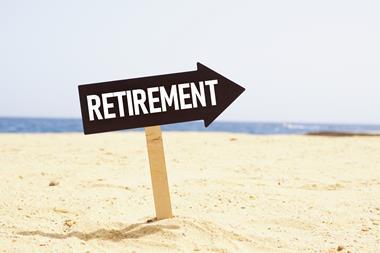François-Xavier Boisseau asks whether the excellent results reported for 2005 are masking a deteriorating position
With the growing threat of avian flu, it's perhaps inopportune to talk about chickens coming home to roost. But are some insurers deluding themselves regarding performance? Have they grown complacent? Have they swallowed their own publicity? What will happen when reality bites?
In the 1980s and 1990s the market delivered sustained underwriting losses. It survived thanks to investment returns, and when they dried up underwriters peered into the abyss. Drastic action turned things around, so no wonder we're in the mood to celebrate decent figures of the sort reported in 2004 and 2005.
But it would be foolish to jeopardise the achievements of the millennium to date. We can't afford to rest on our laurels and let the bad habits creep back. If the insurance cycle turns again, some will be crushed beneath its wheels.
Insurers have a choice. We are at the crossroads in terms of profitability. We can continue to make progress by charging realistic premiums. Or we can veer off into dangerous territory by allowing rates to continue to soften.
The latter option would be the path of least resistance - it'd be easier to compete and there'd be no shortage of volume. But how can underwriters enjoy the ride if they are constantly at risk of paying out more in claims and expenses than is generated in revenues?
Hopefully, insurers have impressed their various stakeholders and their stockholders in the past two years. But if they fail to maintain solid performance, such support will be fleeting. Given the business we're all in, isn't that a risk we should manage?
Those chickens I mentioned are squawking loudly about stagnating prices in motor and household, no doubt as a result of intense competition from new players, direct writers and intermediaries exploiting new routes to market. One leading insurer has recently made double digit percentage reductions in car rates, presumably just to buy share.
Competition is spreading to commercial lines too. Not a bad thing in itself, except that it can trigger an undisciplined approach to pricing. If we compete on quality and value, we stand or fall on our merits. If we resort to competing on pounds, shillings and pence, we're sowing the seeds of volatility and dissatisfaction, with business changing hands every renewal. Business won on price is usually lost on price.
Other factors add spice to the mix. There are emerging sources of risk. Margins are being squeezed by powerful mega-brokers whose size enables them to demand higher remuneration. And our old friend, investment profit, which we welcomed with open arms in 2005, cannot be guaranteed to stick around for 2006.
Against this backcloth, insurer chief executives must show their mettle. We cannot afford to chase the market downwards just to get unprofitable business on the books - volume is vanity, profit is sanity.
So let's tell equity-holders the realities of the insurance industry. We can't guarantee revenue growth and underwriting profitability, especially in a mature market. We also need to persuade corporate insurance buyers that medium to long-term price consistency is preferable to a premium that bounces like a yo-yo from year to year. Insurers also need the support of partner brokers to achieve consistent pricing and to help control distribution costs. We will all see the benefits.
But at the moment there's a real danger that some insurers might squander the progress we have made together in the past couple of years - and then we'll all catch a cold when those chickens finally arrive. IT
' François-Xavier Boisseau is managing director of Groupama Insurances
Hosted by comedian and actor Tom Allen, 34 Gold, 23 Silver and 22 Bronze awards were handed out across an amazing 34 categories recognising brilliance and innovation right across the breadth of UK general insurance.













































